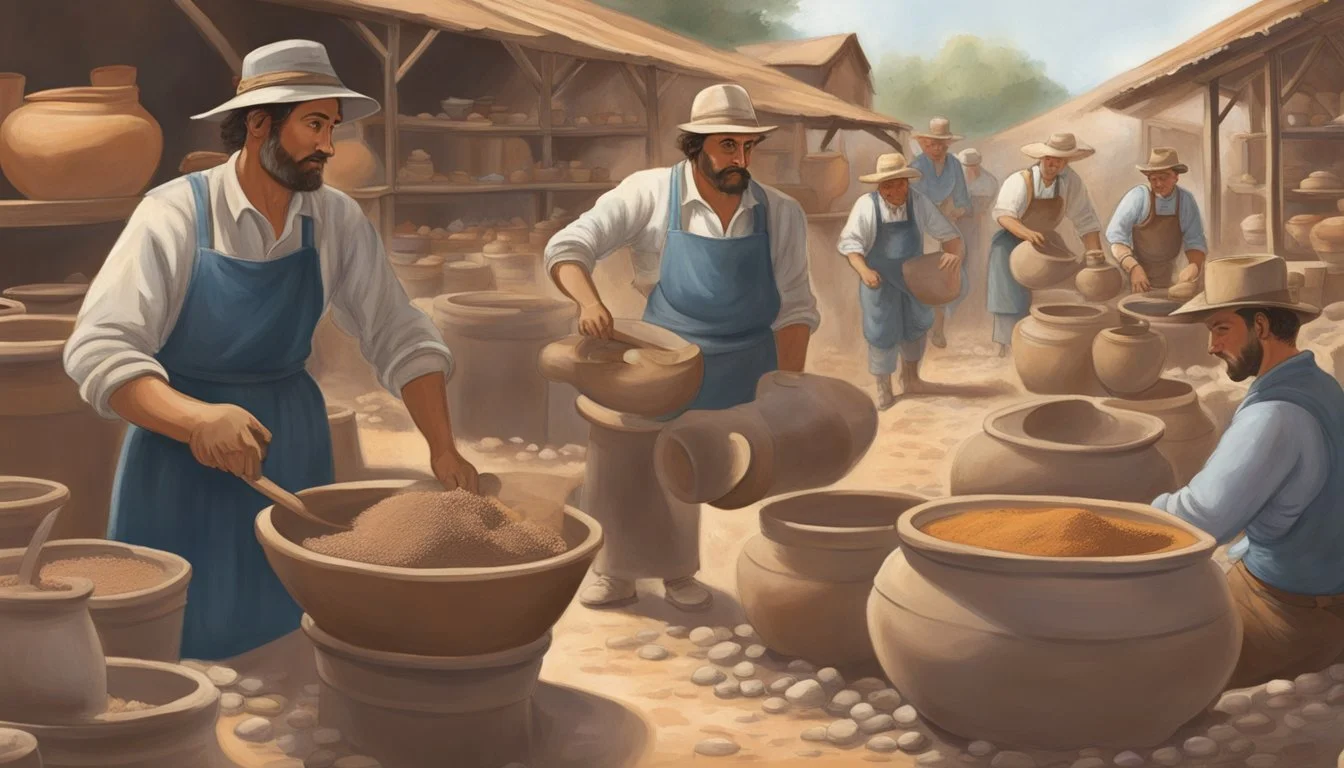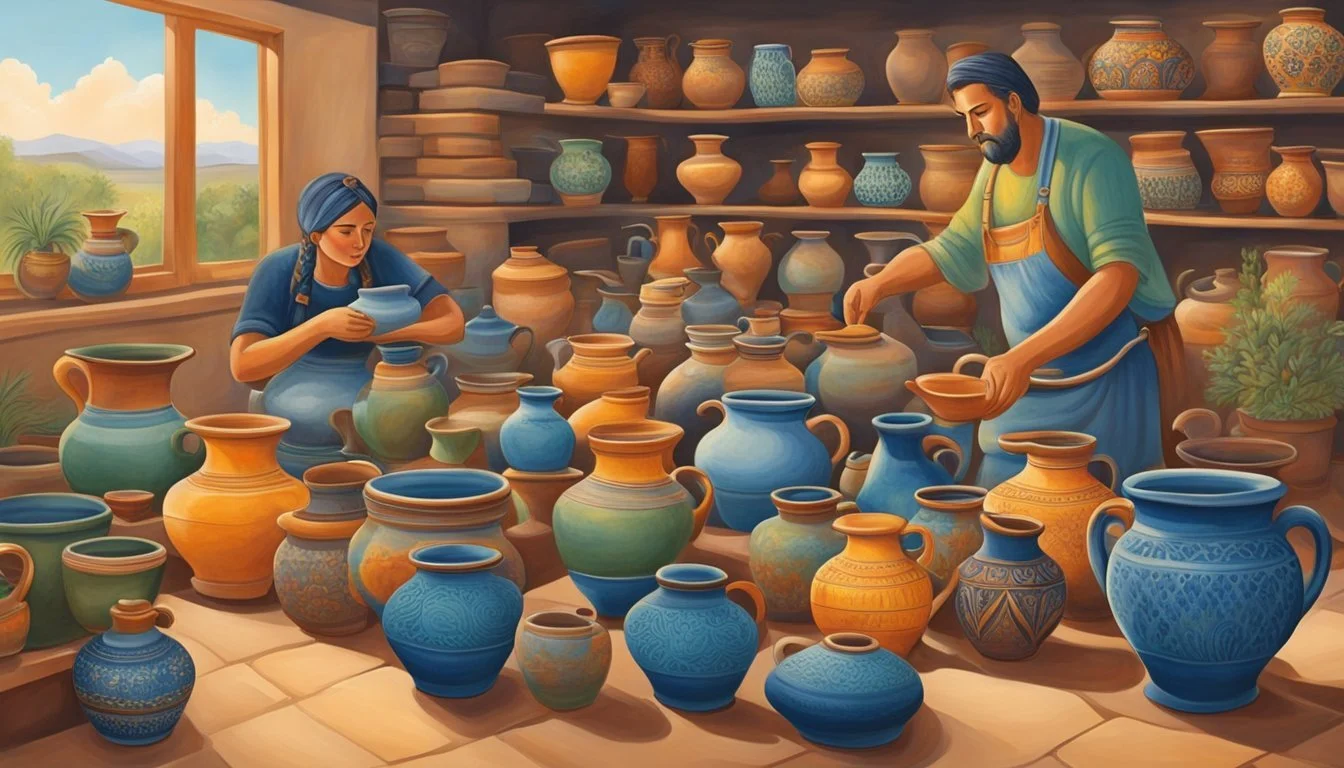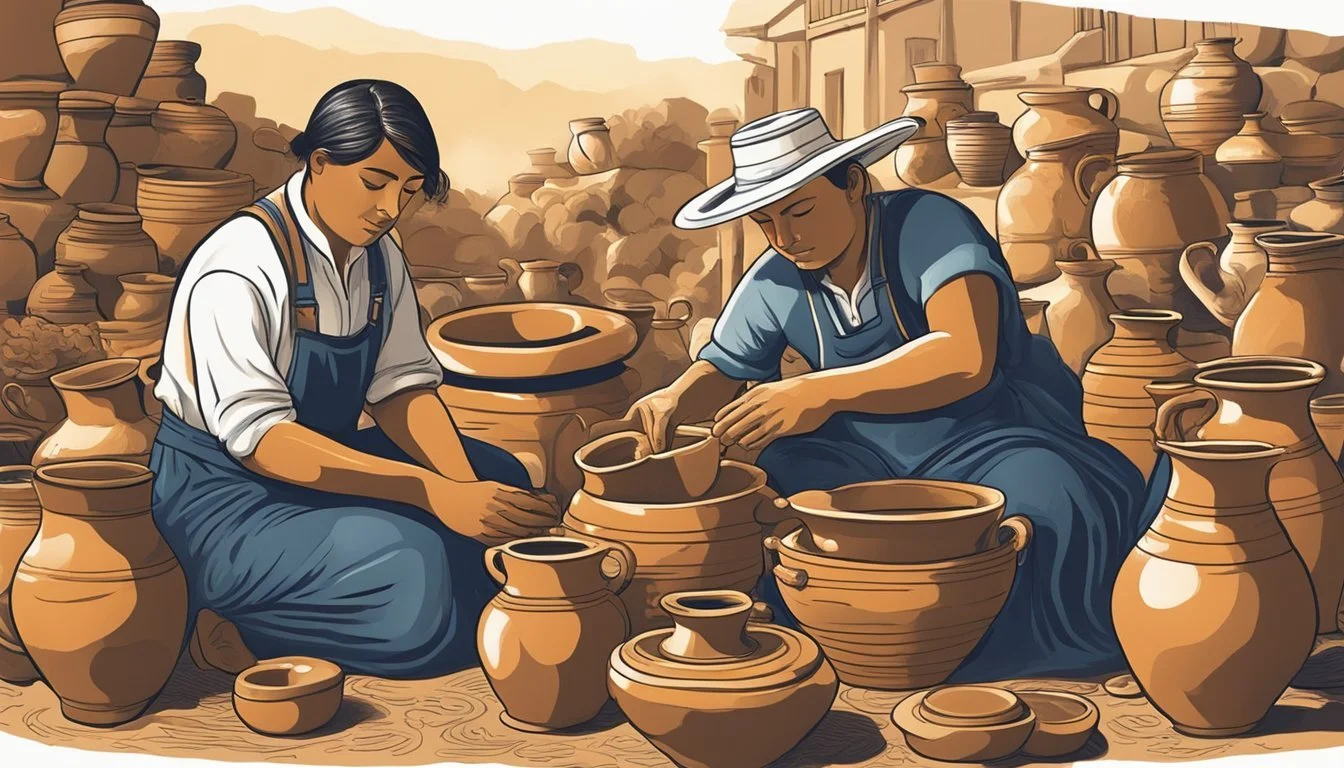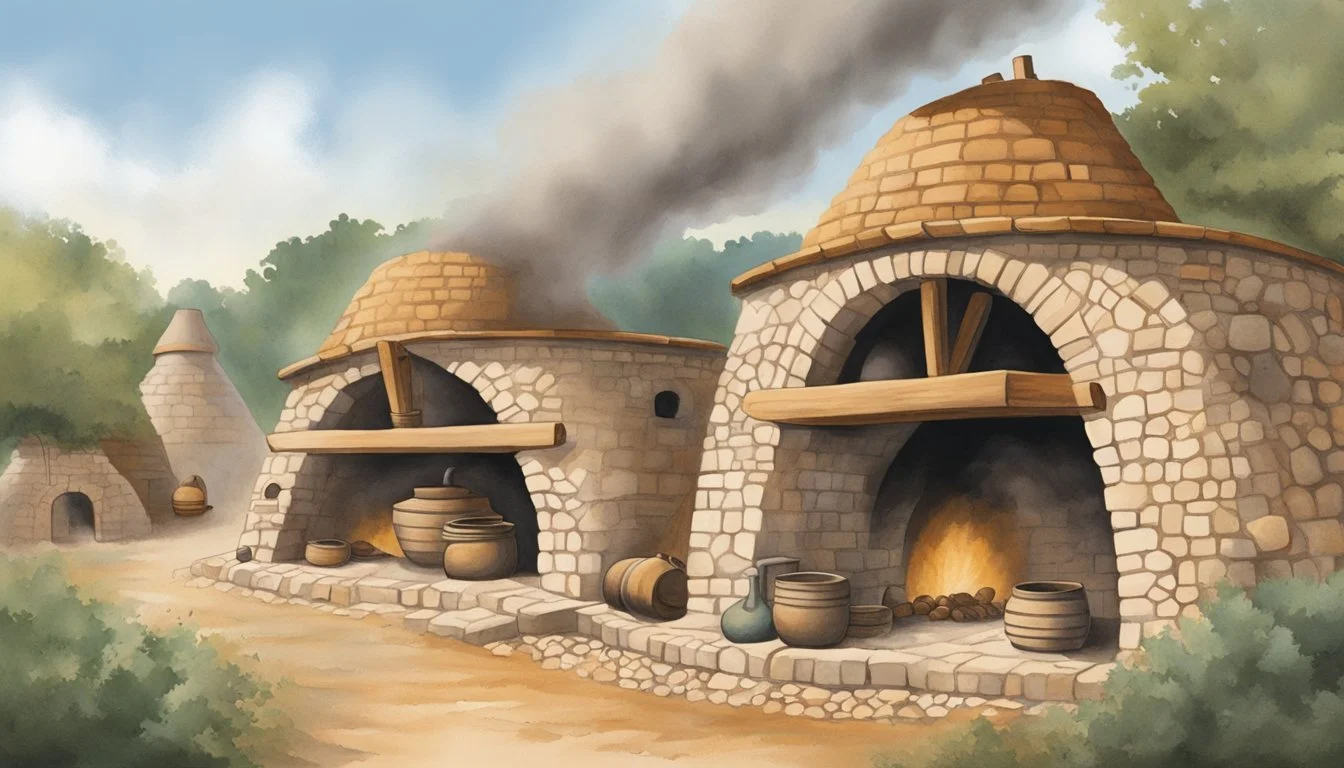The Impact of German Immigrants on Texas Pottery and Ceramics
Cultural Infusion and Evolution
The migration of German immigrants to Texas in the 19th century played a significant role in shaping the cultural landscape of the state. Not only did they influence the social and economic spheres, but they also left a notable mark on the artistic traditions of Texas, particularly in pottery and ceramics. The Germans brought over skilled potters who were well-versed in the techniques and designs unique to their homeland. They established pottery businesses that utilized both traditional German styles and the rich natural resources found in Texas.
As these emigrants settled into the fabric of Texas society, their craftsmanship blended with the local culture to create a distinctive Texan-German art form. Through the development of pottery and ceramics, German Texans introduced new styles and methods, which were adapted to the local clays and influenced by the demands of life on the Texas frontier. The impact of this synthesis can be seen in the utilitarian wares that served the early communities as well as in the decorative pieces that began to emerge as the communities prospered.
The legacy of German influence on pottery and ceramics is evident in the preservation of these artifacts and in the continuation of pottery-making traditions in contemporary Texas. German techniques and styles passed down through generations have become an intrinsic part of the state's artistic heritage, bearing witness to the enduring impact of German immigrants on Texas culture.
German Immigration to Texas: Historical Context
German immigration to Texas played a pivotal role in shaping the state's cultural and economic landscape. This section explores the historical backdrop that led to the significant German presence in Texas.
First Wave of German Settlers
The initial group of German immigrants arrived in Texas during the early to mid-19th century, seeking economic opportunities and freedom from political strife. In 1831, Friedrich Ernst, often called the "Father of German Immigration to Texas," obtained a league of land and soon after, his letters back to Germany describing the fertile land and economic prospects sparked interest among Germans. This correspondence led to a steady flow of German families to the region.
The Establishment of German Communities
These early settlers began establishing tight-knit communities, which became influential in local trade and culture. Cities such as New Braunfels and Fredericksburg were founded, with New Braunfels becoming one of the first major German settlements in 1845. The integration of German traditions and the creation of social and agricultural societies helped in retaining a distinct German-Texan identity.
Adelsverein and the German Nobles' Influence
The Adelsverein, officially the "Society for the Protection of German Immigrants in Texas," was formed to support German settlement. Nobles such as John O. Meusebach managed the society's fund and orchestrated the organized colonization of Texas land grants. Their efforts eased the transition for German immigrants and significantly contributed to the state's demographic and cultural development.
Cultural and Social Impact
German immigrants significantly influenced the cultural and social landscape of Texas, particularly in the Hill Country region, leaving an indelible mark on local pottery and ceramics through their language, customs, religious practices, and educational systems.
Preservation of Language and Customs
German Texans created tight-knit communities where they could preserve their native language and customs. The unique Texas-German dialect became a defining feature in their social interactions, ensuring that their cultural identity remained intact. Many customs were showcased through pottery designs, which often featured motifs and inscriptions representative of German heritage.
Religious Contributions and Diversity
Religious life was a cornerstone of German immigrant society, with their pottery and ceramics often reflecting their Lutheran and Catholic faiths. Religious diversity brought by Germans contributed to the cultural richness of Texas, as seen in the variety of church-inspired ceramics and the use of religious symbols and inscriptions in their pottery.
Educational Advancements through German Schools
German immigrants placed a high value on education, establishing numerous German schools in Texas. These schools not only fostered the German language but also introduced advanced techniques in pottery and ceramics, emphasizing precision and traditional German craftsmanship. The influence of these schools extended to the wider community, enhancing local skills and subsequently the quality and diversity of ceramics produced in the region.
Economic Contributions
German immigrants significantly contributed to various economic sectors in Texas, notably in agriculture, industry, and commerce.
Agriculture and Ranching
German settlers brought with them expertise in farming and livestock management, which they applied to the Texan landscape. These immigrants were pivotal in introducing new agricultural methods and crops, which subsequently bolstered local economies. They cultivated areas that included the Texas Hill Country, where they efficiently managed the land for both crop production and cattle ranching.
Crops: Wheat, corn, and other grains.
Livestock: Introduction of new breeds and ranching techniques.
Industry and Transportation
The industrial sector felt the German influence through the establishment of various businesses, including pottery and ceramics. Having a rich tradition of craftsmanship, German potters contributed to the local economy by producing goods that were both functional and artistic.
Ceramics: Production of stoneware and other items for local use.
Transportation: German immigrants played a role in the development of railway lines, improving connections for their goods to reach broader markets.
Partnerships and Commerce
German immigrants often engaged in partnerships with local businessmen, thereby fostering a cooperative commercial environment. They operated stores and businesses, which facilitated trade and provided necessary services to the growing populations in Texas. Through commerce, Germans had a notable impact on the local economy by expanding the market reach of local products.
Stores: Establishment of local businesses that increased the availability of goods.
Trade: Expansion of market networks through strong local and international partnerships.
Political Influence and Civil Engagement
German immigrants played a notable role in shaping the political landscape of Texas. Their participation in significant historical events and local politics has left a lasting legacy.
Role During the Texas Revolution
German settlers in Texas exhibited diverse allegiances during the Texas Revolution. While some were ambivalent due to recent settlement, others took a bold stand for independence. A faction of German Texans participated in the struggle against Mexican rule, motivated by a quest for political autonomy mirroring the freedoms they pursued when leaving Europe.
The Civil War and German Texans
During the Civil War, German Texans' stances were complex. The state joined the Confederacy, but many in the German Belt—a region of Central Texas with a high concentration of German immigrants—opposed secession. Their support for the Union led to tensions, and in several instances, violence arose between German Unionists and Confederate neighbors. In 1862, the Nueces massacre exemplified this tragic conflict, where German Texans attempting to flee to Mexico were killed by Confederate forces.
German Influence in Local Politics
German Texans have been influential in local politics since their arrival, advocating for a range of public initiatives. They pushed for the establishment of schools, participated in town councils, and influenced public affairs. Their presence was strongly felt in counties within the German Belt, where they helped mould local governance according to both Texan and German values.
German Immigrants and Texas Pottery and Ceramics
German immigrants in Texas played a significant role in shaping the state's pottery and ceramics industry, introducing European techniques and establishing enduring artistry.
Introduction to German Pottery Techniques
German settlers brought with them a rich tradition of pottery-making, characterized by particular techniques that were not widely employed in Texas prior to their arrival. One such technique was salt glazing, a process by which salt is introduced into the kiln during the firing process, creating a distinctive glossy surface with a pitted texture. They also introduced cobalt blue decorations, which became a signature aesthetic in Texan pottery.
Prominent German-Texan Potters
Notable among the early German-Texan potters was Johann Friedrich, who established one of the first known potteries in the region of Fayette County during the mid-1800s. His products were utilitarian stoneware items, including jars, jugs, and crocks, that were essential for the daily life of settlers. Another influential potter of the time was H. R. Eisenlohr, who transitioned from traditional German styles to embrace local influences, reflecting the cultural melding of Texas at the time.
The Evolution of Pottery Styles
Over time, the influence of German pottery techniques merged with local styles and materials, leading to an evolution of pottery traditions in Texas. Clay from local deposits was used, seeing a shift from the dark stoneware clays preferred by Germans to lighter local variations. Shapes and decorations evolved to reflect a blend of German and Texan motifs, symbolizing the integration of the two cultures within the craft.
Media and Literature
German immigrants significantly influenced the Texan cultural landscape, not just in the arts and crafts but also through a burgeoning print culture and transatlantic communications that helped shape the state’s pottery and ceramics heritage.
German-Language Newspapers
Throughout the 19th and early 20th centuries, German-language newspapers flourished in Texas, facilitating the exchange of ideas and fostering community among immigrants. These publications served as a platform for showcasing artisanal works and ceramics, and for advertising local German-owned businesses, including pottery workshops.
Books and Publications
Books and publications offered deeper insights into the techniques and styles of German pottery in Texas. Journey to Texas, 1833 by D. T. F. Jordt, also known as Detlef Dunt, is a notable work that praised the opportunities Texas offered, indirectly spurring the migration that enriched the state’s material culture. Bibliographic records and manuscripts detail the skills and traditions that German immigrants brought with them, which were then instilled into the Texan pottery industry.
America Letters and Transatlantic Communications
America letters, personal correspondences sent back to the homeland, described life in Texas including aspects of the pottery trade. They acted as testimonials and served as practical guides for subsequent immigrants, discussing the realities of trade, including ceramics. These letters complemented the more formal narrative found in books and newspapers and played a critical role in transatlantic communications, as families and craftsmen shared their experiences and creations.
Enduring Legacies
The influence of German immigrants on Texas extends beyond pottery and ceramics, leaving a lasting mark on language, celebrations, and historical preservation.
The Texas German Dialect
A unique Texas German dialect evolved as German settlers arrived in regions like Fredericksburg and San Antonio. While its use has declined, efforts are in place to document and preserve this linguistic piece of Texas culture.
Festivals, Food, and Music
Festivals: Texas hosts various German-themed festivals celebrating the state's rich heritage. Examples include Wurstfest in New Braunfels and Oktoberfest in Fredericksburg.
Food: Traditional German cuisine (What Wine Pairs Perfectly With German Cuisine), especially pies, has become a staple in Texan gastronomy. These culinary traditions continue to be celebrated and enjoyed across the state.
Music: The legacy of German immigrants is audible in Texas music. Icons like Willie Nelson have even blended country with German polka, underscoring the cultural integration.
Heritage Sites and Museums
Museums: The Sophienburg Museum in New Braunfels and the Pioneer Museum in Fredericksburg are dedicated to preserving the history and contributions of German immigrants.
Heritage Sites: Enclaves like Fredericksburg maintain historical architecture and cultural sites, offering a tangible connection to the past.
Conclusion: The Ongoing Influence of German Immigrants
The legacy of German immigrants on Texas pottery and ceramics endures, as these artisans have left an indelible mark on the state's artistic landscape. Over the decades, German settlers introduced new techniques and design sensibilities, which blended with local traditions to create a unique Texan pottery genre.
Migration patterns dating back to the 19th century brought skilled potters who established workshops and shared their expertise. The peak of this influence was observed after several German nobles facilitated chain migration, allowing whole communities to transfer their craftsmanship to Texan soil. By the end of the 19th century, the German population in Texas had grown significantly, leading to greater cultural assimilation and intermingling of artistic practice.
Today's Texan pottery scene reflects these historic ties, maintaining practices instilled by early German settlers. For instance:
Stoneware: German influences are seen in the prevalence of stoneware, a durable pottery form.
Salt Glaze: The technique of salt glazing, producing a glossy, translucent finish, remains popular.
Furthermore, annual festivals and markets often showcase ceramics that pay homage to German styles, keeping this part of the cultural heritage alive. Noteworthy is the way certain motifs and decorative elements persist, a testament to the robustness of the German impact.
In academic circles, the examination of pottery shards and antique pieces continues to reveal the sophistication of early German-Texan potters, whose influence acts as a bridge connecting the past and present of Texas's artistic identity.









